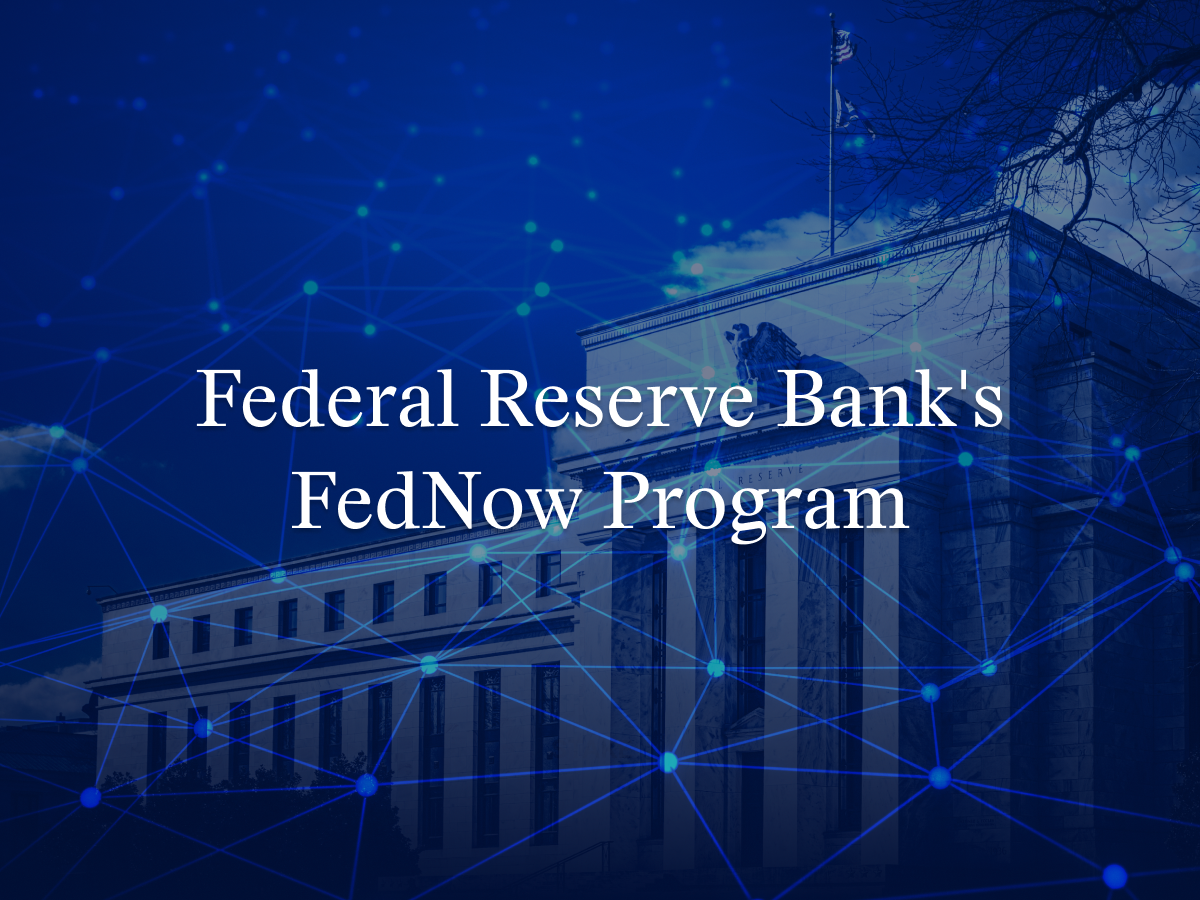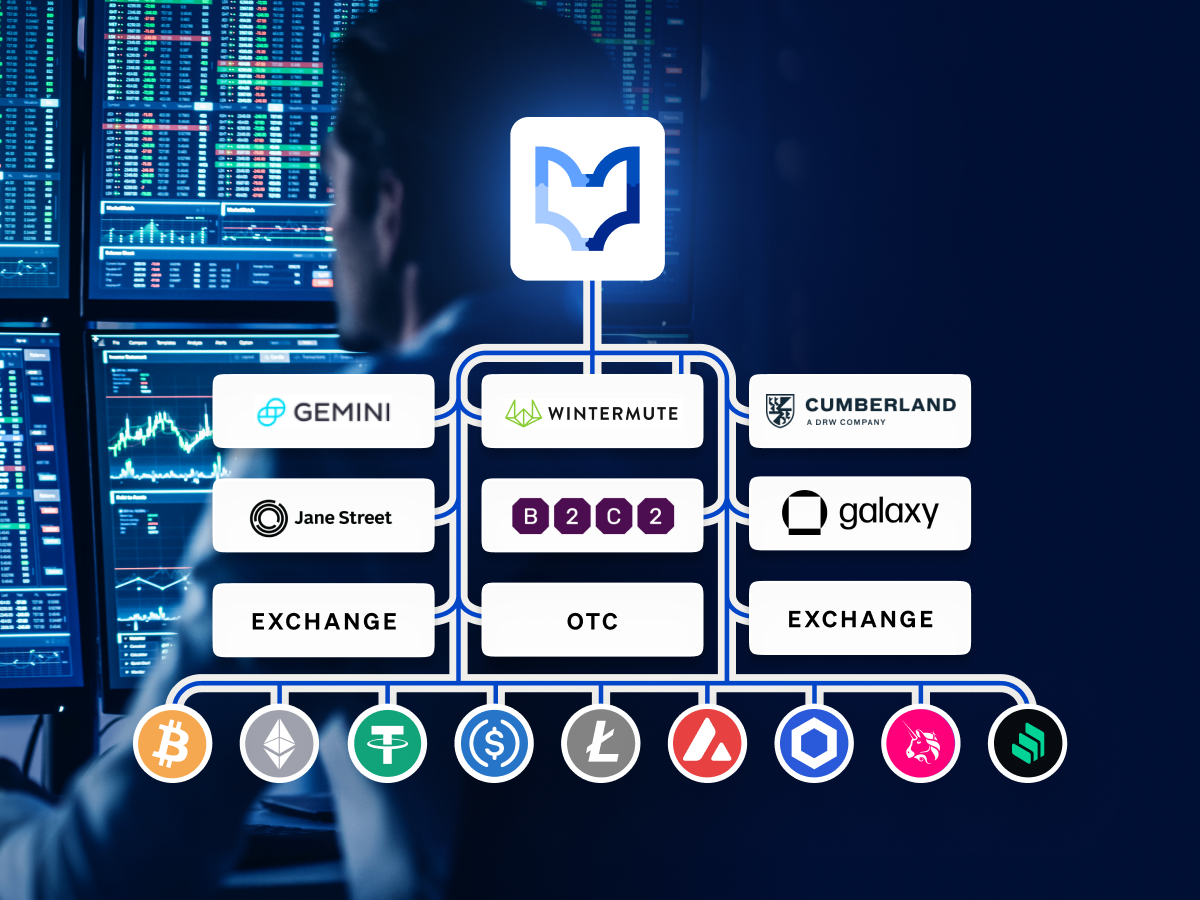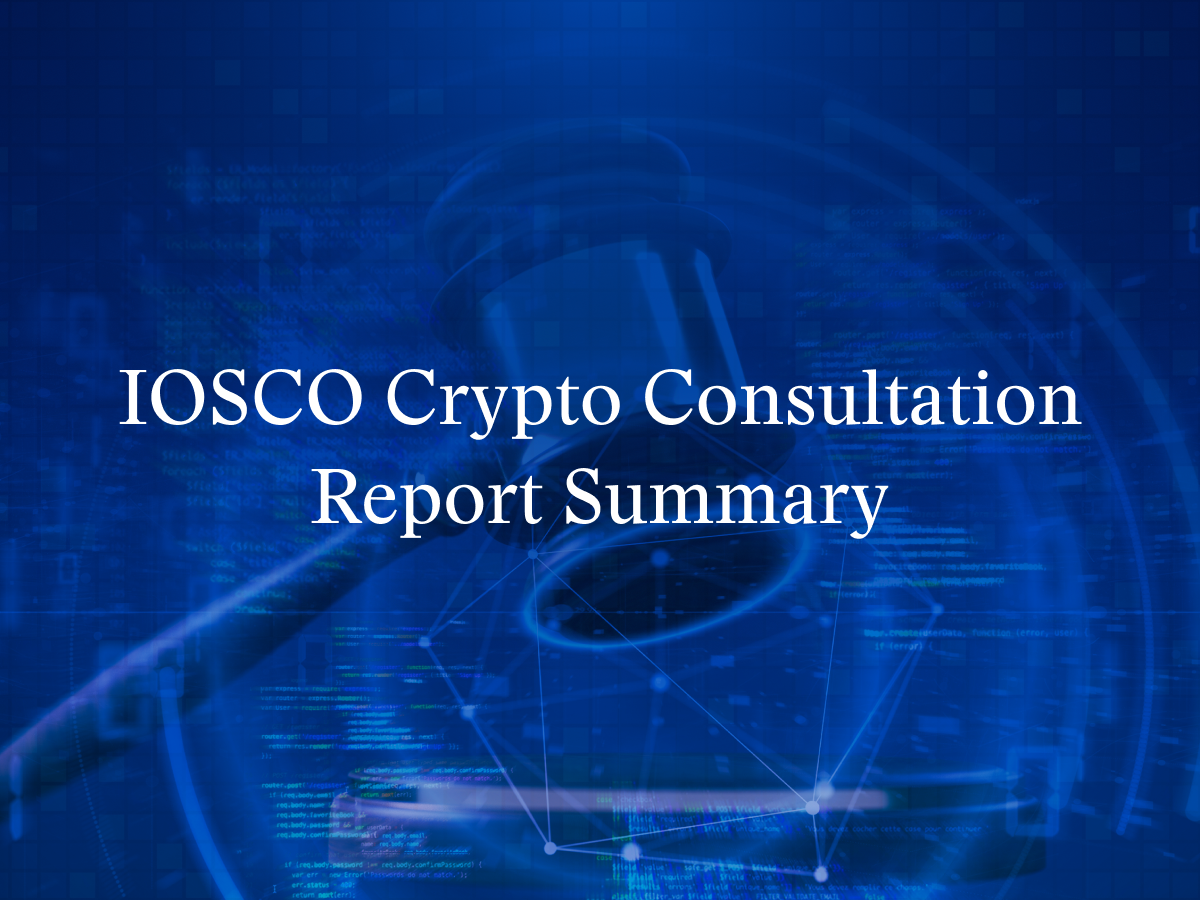A serious trader understands that you’re only as good as the venues at which you trade. No matter the asset you’re trading, different venues may provide different price points, spreads, levels of liquidity, and tools for getting edge when actually trading those assets. Even more fundamental is the issue of reliability: if you can’t count on your chosen trading venue to stay operational at all times and to properly secure your funds, then trading there is a fool’s errand.
So, when you’re entering the crypto market, you may find yourself asking a perfectly natural question: What’s the best cryptocurrency exchange?
In an emerging market like crypto where liquidity is still globally fragmented among literally hundreds of trading venues and exchanges still experience unplanned outages in times of market volatility, the best place to exchange cryptocurrency may not be on an exchange at all: it may be smarter to trade on a low-latency platform that gives you the ability to trade on all major exchanges from a single account, automatically slicing your orders and routing them to the most competitive venues for a better priced, more reliable, more professional trading experience.
It so happens that this exact kind of platform has been around for over five years, quietly facilitating over $12 billion in transaction volume and giving the top 1% of hedge funds the edge they need to be confident in their crypto performance. SFOX is how sophisticated crypto traders outperform, and today, we’re going to give you a look under the hood at one of the core features that empowers them to do that: SFOX’s integrated order book.
The Problem: How to Find the “Best” Cryptocurrency Exchange in an Opaque Marketplace of Crypto Trading Venues
If someone asked you, “What’s the best cryptocurrency exchange?”, an obvious answer might be, “The exchange with the best prices.” But the more you try to understand which trading venue has the best prices, the more you’ll realize that’s not the right question to ask at all.
At least four factors go into understanding the quality of an exchange’s pricing—and with many of those factors either opaque, highly dynamic, or both, you might quickly find yourself looking for a better option.
Fees
Fees may be the first factor that many traders think of when considering which exchanges have the best prices: how many bps does the exchange explicitly charge per trade? How is this fee balanced against any volume discounts that the exchange may offer?
Unfortunately, there are two problems with focusing just on these explicit sorts of fees when trying to determine the competitiveness of a crypto trading venue.
- Different trading venues use incommensurable fee structures. While most cryptocurrency exchanges show explicit fees associated with any given trade, some other venues—like many OTC desks, for instance—may have better overall prices but bake their margin into the asset prices that they quote, not charging any additional fees. This makes it all the harder to settle the question of best price just by looking at fees.
- Many trading venues undercut their clients with hidden fees. “Hidden fees” are the myriad ways besides explicitly quoted fees through which trading venues can hinder trade execution. We’ll consider three of these more hidden factors below.
Spread
Less obvious than fees but just as impactful on pricing and trade performance is the spread between a cryptocurrency exchange’s best bid and best ask for an asset like Bitcoin.
An exchange with a tight spread—for instance, a BTC order book with a best bid of $9114.16 for 0.1 BTC and a best ask of $9114.20 for 0.1 BTC—will allow its traders to buy and sell BTC at a very low transaction cost. In contrast, an exchange with a wider spread—say, a best bid of $9107.50 for 0.1 BTC and a best ask of $9120.86 for 0.1 BTC—is essentially charging its traders more whenever they want to take from the order book, all else being equal, increasing the exchange’s transaction costs. A trader looking to buy 0.1 BTC on the exchange in this example with the wider spread, all else being equal, will be paying a premium of 7 bps vs. trading on the tighter exchange, purely because of the difference in spread.
And that example is just looking at the very top of exchanges’ order books: if you’re looking to trade larger quantities at once, like 1, 10, or 100 BTC, the differences in spread can get pretty dramatic pretty quickly.
But tight spread will only get you so far: without other factors crucial to market health, you could have a crypto exchange with tight spreads yet incur huge amounts of slippage every time you trade. Key among those other factors is liquidity.
Liquidity
Liquidity is the question of how “filled out” an exchange’s order book is. Oftentimes, trading venues will have very small quantities of assets like BTC at on top of their books, meaning that traders looking to make medium- or large-quantity orders could end up being pulled deeper into the order book in order to fill their order, incurring significant slippage in the process. For professional traders, minimizing slippage is critical to successfully scaling a trading strategy: a serious trader needs to know that their trading venue is providing them the best bid when they’re selling an asset and the best ask when they’re buying it. When it comes to individual crypto exchanges, it’s virtually impossible to determine whether or not that’s the case.
It can be a challenge, to say the least, to vet a crypto trading venue based on the desideratum of liquidity. Exchanges’ liquidity levels can fluctuate fairly frequently, and exchanges’ self-reported numbers on data like trading volume have been called into question in the past. Ironically, even though liquidity can potentially be a more significant influence on order execution than an exchange’s explicit fees, it’s also much harder to get clear data on liquidity and therefore choose a trading venue based on the depth of its order book.
Actionable Prices
Even if an exchange has compelling prices along all the previous dimensions, its pricing won’t mean much if traders can’t reliably use the order book to fill orders. There are three key ways in which this reliability might be threatened:
- Time to execution. Not all trading venues are created equal, and poor infrastructure could create delays between the time you submit an order and the time it’s actually sent to the book. In that time, the book might have moved away from your limit order, or the order you were looking to take may have already been taken.
- Exchange outages. When exchanges experience unexpected downtime (as we’ve seen happen fairly regularly in the last few months), users can end up being locked out of their trading interface, unable to make new orders—nor even to edit open orders.
- Bots. Virtually all major exchanges are crawling with trading bots that can often prevent trades from filling with tactics like penny-jumping, using your trades as signals for their own strategy without ever allowing your orders to be filled. Especially for users who are trading manually rather than algorithmically, this has the potential to significantly impede trading strategies.
It can be virtually impossible to even evaluate where one cryptocurrency exchange stands with respect to the above factors, let alone to compare exchanges along these dimensions. On the other hand, if you’re still set on finding the best cryptocurrency exchange, you might consider an alternative, proven solution that brings efficiency and transparency to all the above considerations: SFOX’s integrated order book.
The Solution: One Low-Latency Order Book Unifying All Crypto Trading Venues from One Account
Log into your SFOX account and you’ll find an unassuming order book that looks like any other: a choice of markets for seven cryptocurrencies, a bid side, an ask side, and a spread.
What’s hiding just beneath the surface of this order book is proven technology that solves all four of the trade execution problems we considered above.

Here’s how the SFOX integrated order book, which gives traders access to all major crypto trading venues in one place, gives SFOX users the transparently best trade execution out there.
Clearer Fees: Net Prices Rather than Gross Prices
To give SFOX traders a dead-simple understanding of where the current best prices for cryptocurrencies are, fees and all, SFOX’s order book uses net-price routing (that’s what the “NPR Active” in the top-right-hand corner of the book means). This means that all the prices you see on SFOX’s book already include the fees charged by the various venues listed on the right-hand side of the book. That makes it really easy to see that OX, an exchange, currently has the best bid, marketwide, for BTC, while B2C2, an OTC desk, currently has the best ask, marketwide—even though those two trade venues have totally different fee structures.
Better yet, SFOX traders will automatically have their orders routed to and executed on the venues with the best current prices when they place a buy or sell order. No need to set up separate accounts at all of these venues—simply trade as you normally would on SFOX’s one order book, and you’ll be able to see yourself capturing the best available prices in real-time.
Tighter Spreads: The Best Bid and Ask from the Entire Crypto Market
You’ll notice in the above example of SFOX’s order book that the trading venue with the best current bid is not the same trading venue that has the best current ask. That’s a common feature of crypto markets: as the books of individual exchanges shift over time, some might happen to have more competitive asks while others have more competitive bids.
On SFOX’s integrated order book, in contrast, traders can view and access the bids and asks of all those trading venues in a single order book. Logically, that means you’ll find the tightest spreads anywhere on the market, showing you the best bid anywhere, the best ask anywhere, and the lowest transaction fees of any trading venue. The proof of this is that you’ll oftentimes see the two sides of SFOX’s order book cross, creating trackable arbitrage opportunities and allowing traders to buy and sell even more efficiently, regardless of what their particular strategy is.
Deeper Liquidity: Every Crypto Order from Major Trading Venues in a Single Book
By the same token as it provides the tightest spreads anywhere, the SFOX integrated order book also provides the deepest liquidity. No matter how deep the book or your preferred exchange is, an integrated order book that includes your preferred exchange plus many other exchanges will be deeper. This is especially true since SFOX’s order book includes liquidity from OTC desks such as B2C2, which typically offer liquidity designed for large trades but typically aren’t accessible in an exchange-style interface built for active traders.
The upshot of this is that average slippage on SFOX for orders of ≤ 100 BTC is 5x better than slippage on any crypto exchange.
What’s more, SFOX’s advanced order types allow traders to turn this increased liquidity to their advantage even further: if you’re looking to trade especially large orders, for instance, you can use an order type like Gorilla to break that order up into much smaller pieces and slowly route them to a variety of liquid venues, allowing you to move the market much less with your trade than you might on a single exchange or OTC desk.
Resiliency and Efficiency: Always-Accessible Prices
Over the last 5 years, SFOX has repeatedly invested in its infrastructure to ensure that traders can always easily capture the opportunities its integrated order book presents. The result is a platform that lets you focus more on your trading strategy and less on hoping that your trade fills.
- Transactions execute in 5 milliseconds. Once you’ve hit the button to place your order, you don’t need to worry about it reaching the order book—it’s probably already there.
- The SFOX platform and order book stays up even if one or several of the venues to which it’s connected experience downtime. SFOX has 99.99% uptime, allowing its traders to keep making trades and managing their positions even if exchanges have operational hiccups and go down.
- SFOX’s advanced order types are built to dodge bots. Order types like the recently upgraded Hare are designed to take advantage of the integrated order book by moving your order in between different trading venues until it fills, working to stay ahead of bots and find the best price execution no matter what.
On top of all that, SFOX continues to build new tools to better monitor and get alerts from its order book—for instance, its arbitrage tracking system allows traders to get instantly notified whenever the integrated order book registers arbitrage opportunities in the crypto market, and then takes them directly to their SFOX account to capture those opportunities.
Trade Smarter
If you’re only as good at the venues at which you trade, then why aren’t you trading at all venues at once? The integrated order book is at the heart of how SFOX creates edge, but it’s also just the tip of the iceberg in terms of the toolkit they’ve been giving savvy crypto traders for half a decade.
Want to take the whole suite for a test drive? Sign up for SFOX for free and start trading.


